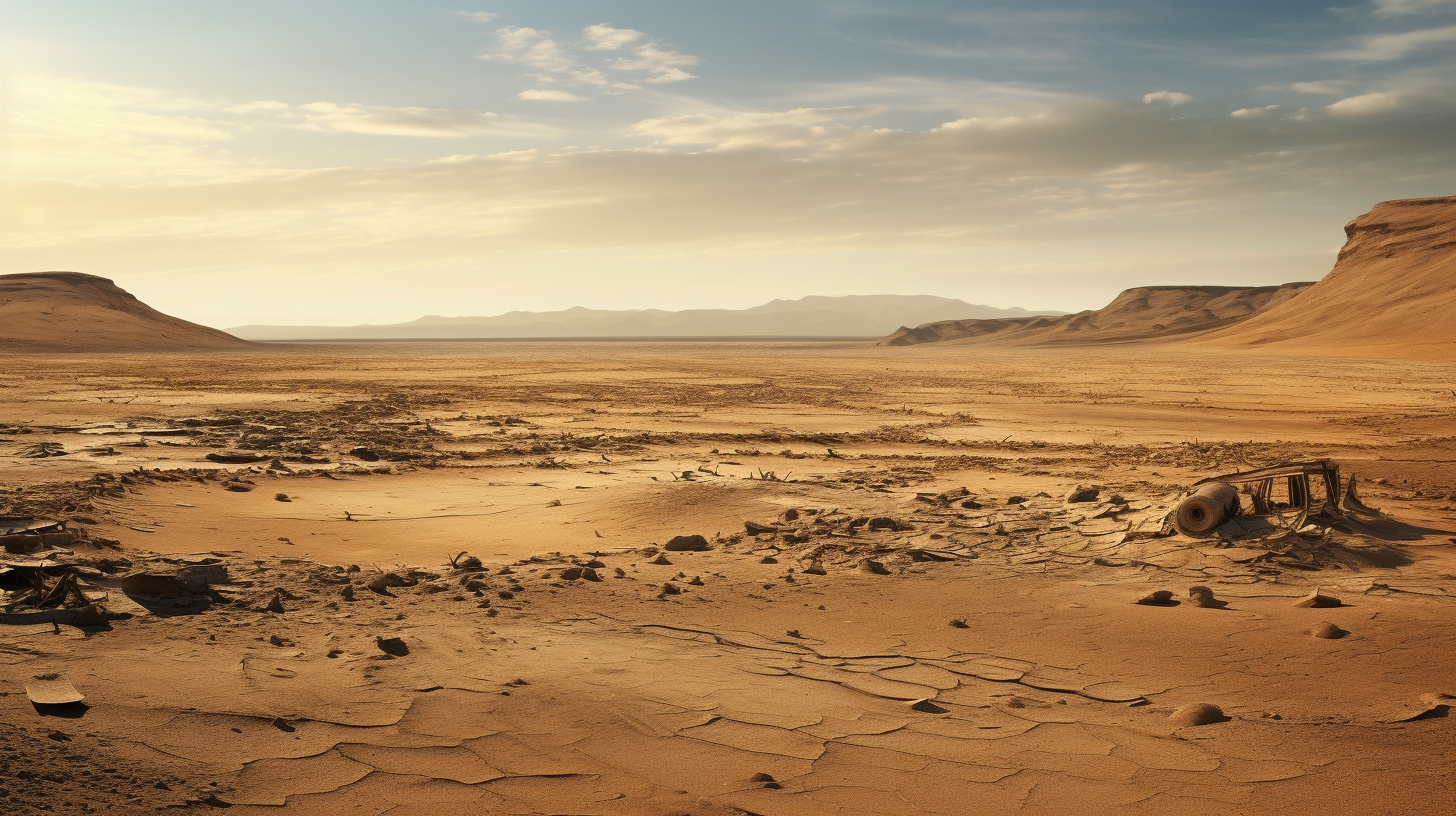In an era where the cacophony of civilization has been the backing track of our daily lives, a new silence is emerging. Not the tranquil hush of a peaceful retreat, but a silence imposed by nature as deserts swell and devour the land once brimming with biodiversity and human activity. This is an exploration into the eerie quietude of the world’s expanding deserts, a phenomenon we shall term ‘Sandwaves of Silence’.
The relentless spread of arid lands, once checked by the balanced systems of the earth, runs rampant in our present dystopian reality. These barren expanses, once confined to our planet’s belts, now threaten to encroach upon regions that flourished green. The Sahara, bloating beyond historical confines, usurps settlements and livelihoods, a fate reflecting in deserts worldwide. ‘The desert does not creep; it gallops,’ remarked a lone scientist, whose voice is swallowed by the very sandstorms he studies.
Climate change and unsustainable practices couple in a lethal dance to hasten this desertification. The relentless extraction of water from underground aquifers for industrial agriculture, the ‘invisible theft’ as farmers call it, leaves behind a parched void. These regions, once bountiful with harvests, become victims to the advancing sand dunes. With this, we lose not only food, soil fertility, and ecosystems but also the rich tapestry of culture that is interwoven with the land.
As cities are swallowed, infrastructure crumbles. Echoes of life — children’s laughter, market bartering, and the hum of machinery — are stilled, buried under high dunes that glide over them with a slow indifference. Desolate landscapes reveal the skeletal remains of abandoned homes and depleted wells, monuments to what once was. They stand, neglected testaments to our environmental apathy.
Yet, it is not the absence of sound alone that defines the Sandwaves of Silence. It is the absence of life. Flora and fauna, native to these now ghostly terrains, either adapt or perish. Nomadic tribes who once navigated these regions, reading the land like a map, now find their way suppressed by the encroaching sands. Their knowledge, lore, and very existence are at the brink of becoming faint whispers, ready to be silenced forever by the indifferent winds.
The question of whether humanity can or will address the desertification crisis remains moot. With the collapse of international cooperation and the rise of isolationist policies, the resolve to invest in comprehensive restoration and preventative measures dwindles. Scientists’ calls for action are but diffused murmurs in a world where their concrete data faces the abstract nature of political will.
The Sandwaves of Silence are a metaphorical and literal manifestation of our times. They represent the quieting down of an over-burdened world and the aggressive silence of inhospitable lands on the march. But should these sandwaves serve as stiflers of hope? Perhaps not. In their numbing silence lies a stark reminder that, despite our dystopia, the voice of change, if raised collectively, can still resonate through the desolation.
We find ourselves at the crest of one such sandwave, peering into the abyssal silence, caught between remorse for what is lost and the dread of what is to come. Our present may be a foresighted warning etched into the sands of time, one we are obligated to heed. For in the end, it is a human silence that has allowed the Sandwaves of Silence to rise undisturbed, a silence that has now become deafening.
